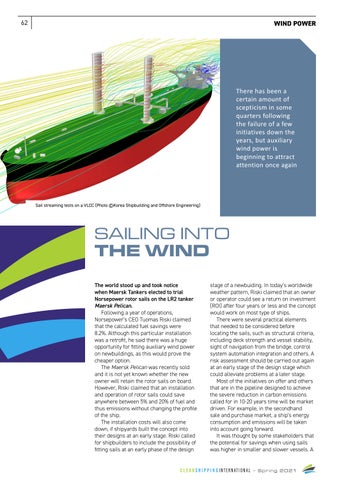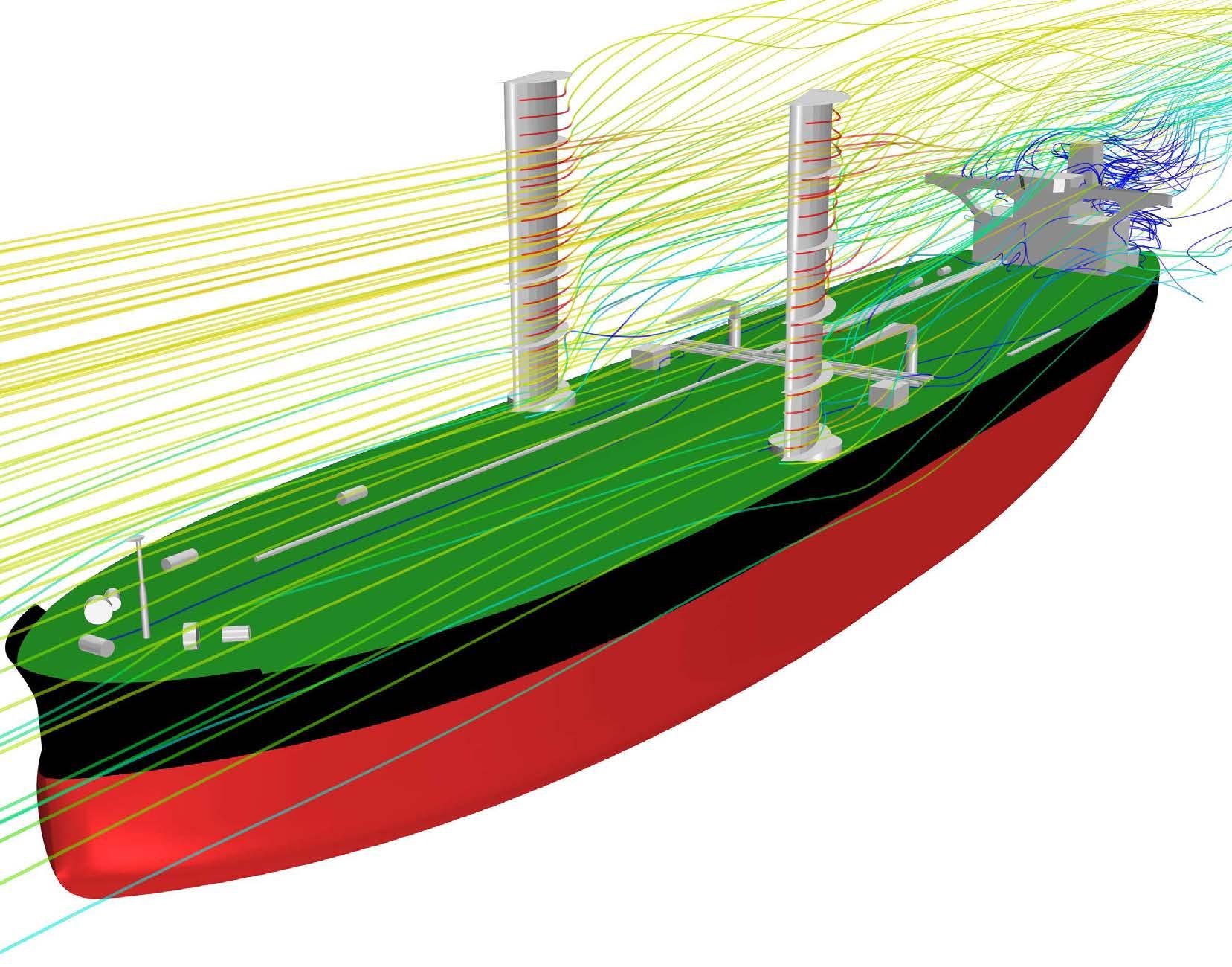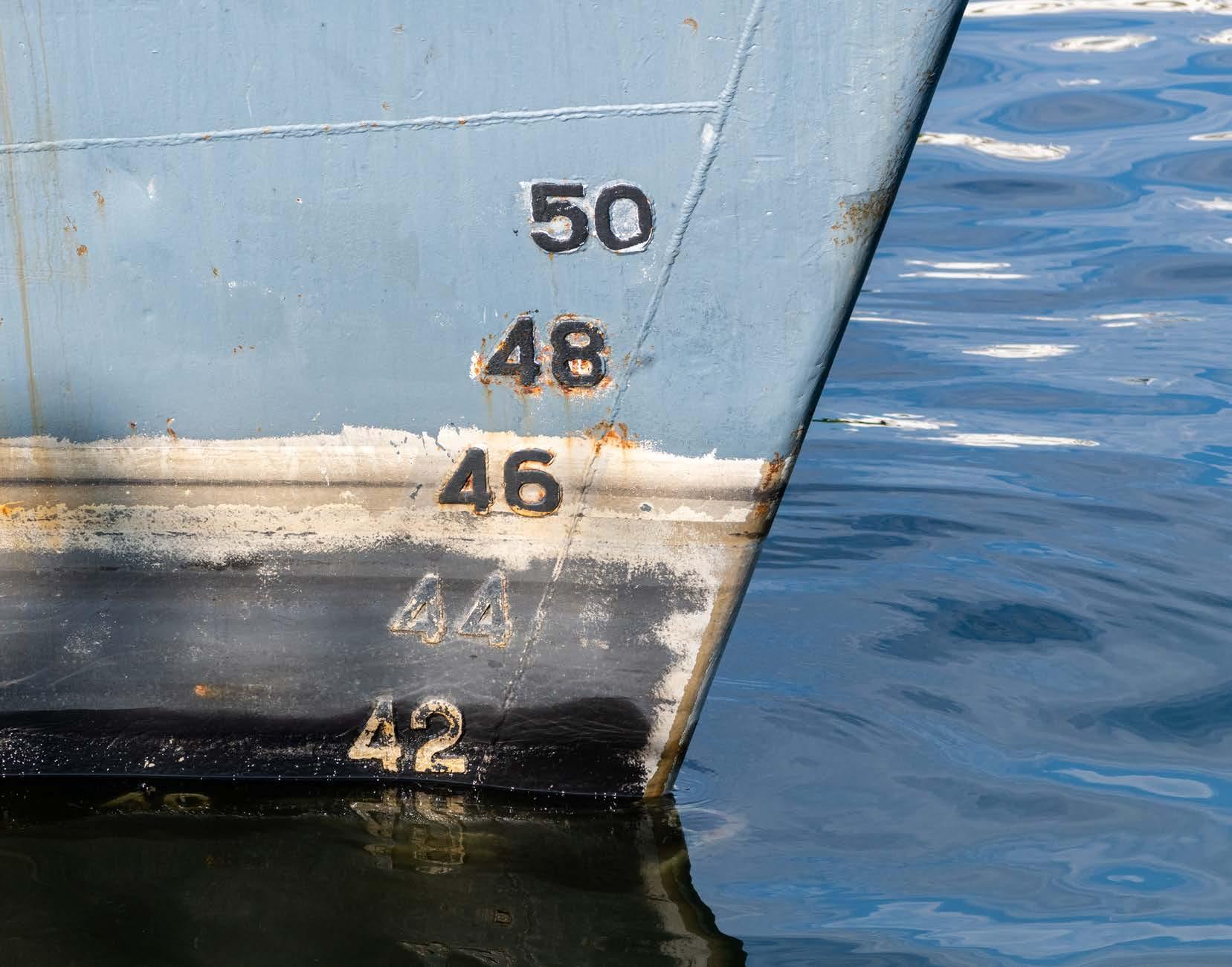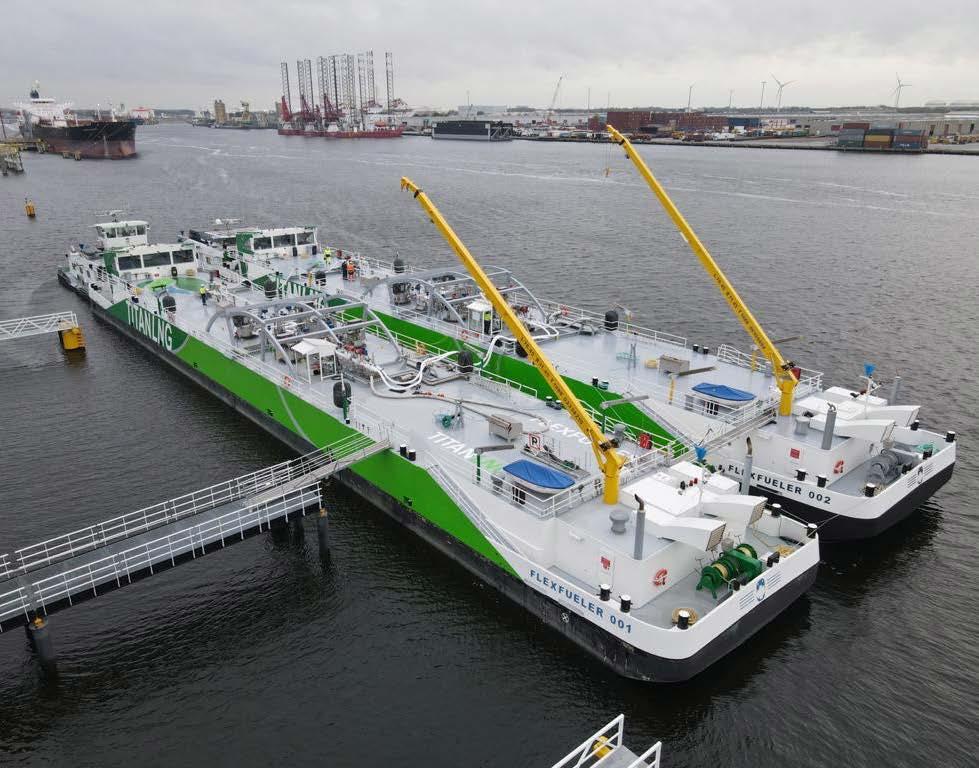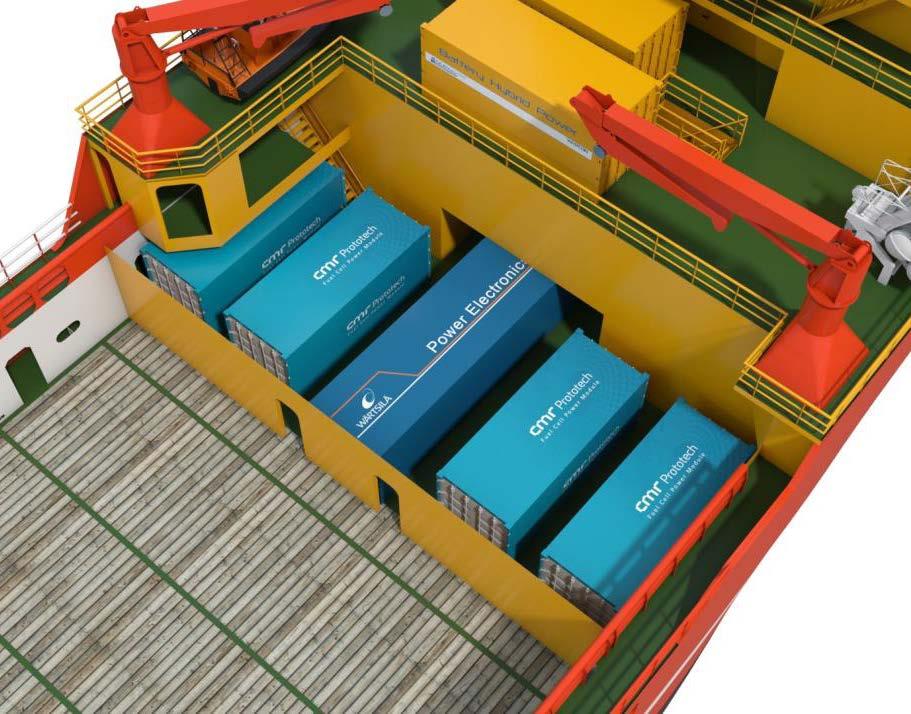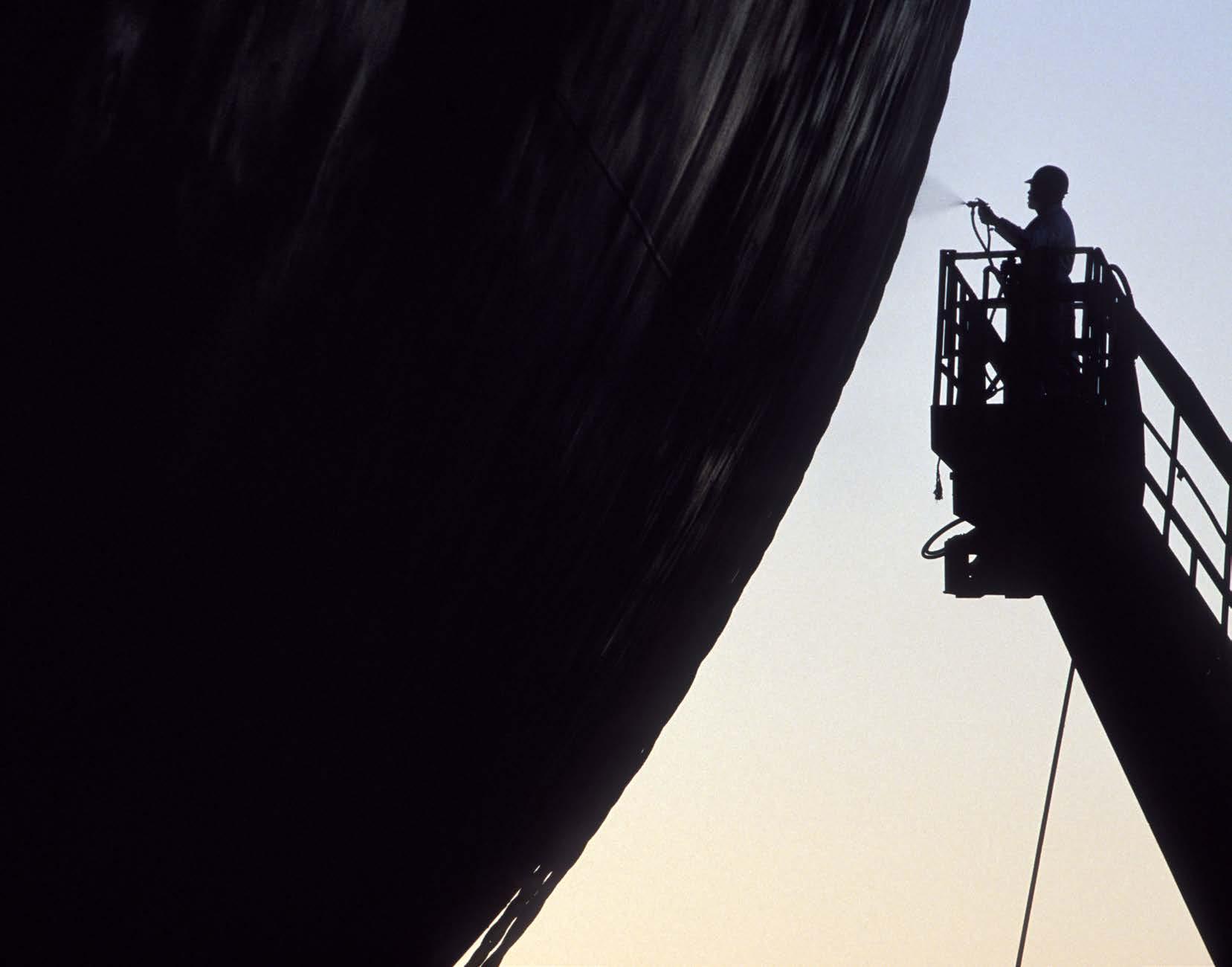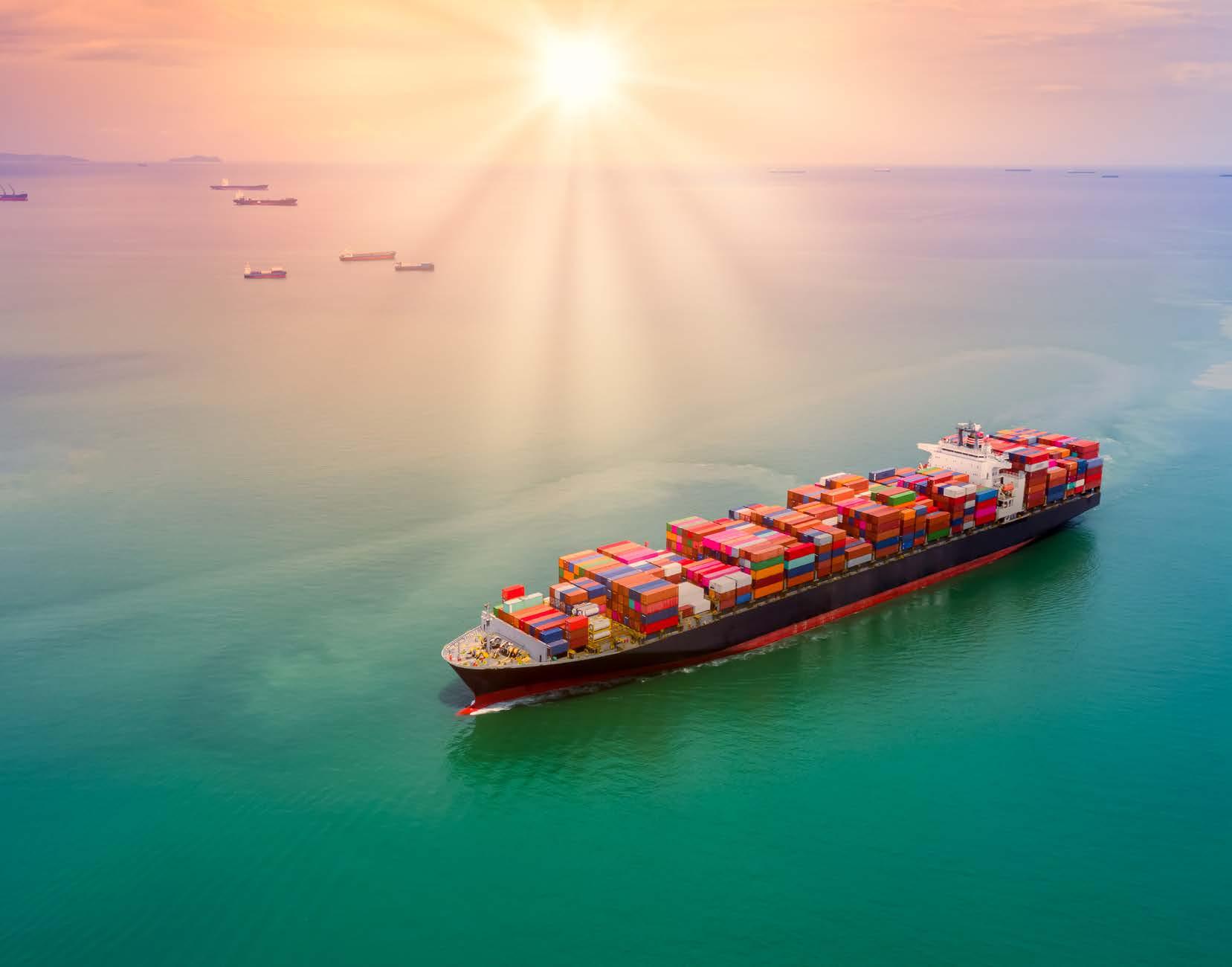62
WIND POWER
There has been a certain amount of scepticism in some quarters following the failure of a few initiatives down the years, but auxiliary wind power is beginning to attract attention once again
Sail streaming tests on a VLCC (Photo ©Korea Shipbuilding and Offshore Engineering)
SAILING INTO THE WIND The world stood up and took notice when Maersk Tankers elected to trial Norsepower rotor sails on the LR2 tanker Maersk Pelican. Following a year of operations, Norsepower’s CEO Tuomas Riski claimed that the calculated fuel savings were 8.2%. Although this particular installation was a retrofit, he said there was a huge opportunity for fitting auxiliary wind power on newbuildings, as this would prove the cheaper option. The Maersk Pelican was recently sold and it is not yet known whether the new owner will retain the rotor sails on board. However, Riski claimed that an installation and operation of rotor sails could save anywhere between 5% and 20% of fuel and thus emissions without changing the profile of the ship. The installation costs will also come down, if shipyards built the concept into their designs at an early stage. Riski called for shipbuilders to include the possibility of fitting sails at an early phase of the design
stage of a newbuiding. In today’s worldwide weather pattern, Riski claimed that an owner or operator could see a return on investment (ROI) after four years or less and the concept would work on most type of ships. There were several practical elements that needed to be considered before locating the sails, such as structural criteria, including deck strength and vessel stability, sight of navigation from the bridge, control system automation integration and others. A risk assessment should be carried out again at an early stage of the design stage which could alleviate problems at a later stage. Most of the initiatives on offer and others that are in the pipeline designed to achieve the severe reduction in carbon emissions called for in 10-20 years time will be market driven. For example, in the secondhand sale and purchase market, a ship’s energy consumption and emissions will be taken into account going forward. It was thought by some stakeholders that the potential for savings when using sails was higher in smaller and slower vessels. A
C L E A N S H I P P I N G I N T E R N A T I O N A L – S p r i n g 2 0 21
